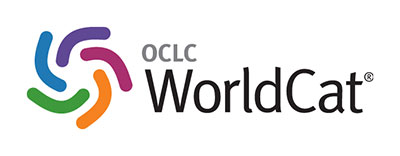Implements used by legal representatives for oral hygiene in children aged 0 to 3 years in the Yanuncay parish. Cuenca, Ecuador
DOI:
https://doi.org/10.26871/killcanasalud.v8i3.1593Keywords:
Implements, instruments, preschoolers, age, oral hygieneAbstract
Background: Promoting oral health, the instruments and implements used in oral hygiene, knowledge of representatives, nutrition, beliefs, among others; are determinants for the development of oral diseases and caries at an early age in infants. Objective: to identify the implements used by legal representatives for oral hygiene in children from 0 to 3 years of age in the Yanuncay parish. Cuenca-Ecuador. Materials and methods: for this cross-sectional study, the sample was first calculated using OpenEpi, a statistical software, which resulted in 215 children out of a universe of 3,932, which was the total number of infants in the parish. The survey, which was the instrument used in this project, underwent a validation process using Aiken's V. statistical test; once it was approved, the survey was carried out with the children's representatives. After obtaining the data, contingency tables were made in Microsoft Excel 2021 and the statistical significance was evaluated using Stata version 8.0 software in order to interpret all the data that the survey helped to collect. Results: 73.49% of the implements used by legal guardians for oral hygiene in children from 0 to 3 years of age in the Yanuncay parish are toothpaste and 67.44% are toothbrushes. Conclusions: Although most children use toothpaste and toothbrushes, the most commonly used one does not contain fluoride, which could lead this group of children to develop caries at an early age because they do not have a protective effect against this pathology.
Downloads
References
Lozada López F, González Aguilar V, Salvador Arroba J. Diagnóstico de la educación odontológica y la higiene bucal en edades tempranas en Ecuador. Revista Conrado. 2021;17(83):463–8. Disponible en: http://scielo.sld.cu/scielo.php?script=sci_arttext&pid=S1990-86442021000600462
Vélez-León E, Albaladejo A, Cuenca-León K, Jiménez-Romero M, Armas-Vega A, Melo M. Prevalence of Caries According to the ICDAS II in Children from 6 and 12 Years of Age from Southern Ecuadorian Regions. Int J Environ Res Public Health. 2022 Jun; 19(12): 7266. DOI: https://doi.org/10.3390/ijerph19127266
Munayco E, Pereyra H, Cadillo. Marleny. Calidad de vida relacionada a la salud bucal en niños peruanos con caries de infancia temprana severa. Odontoestomatologia. 2020; 22(36): 4-14. DOI: https://doi.org/10.22592/ode2020n36a2
Morales E, Lancellotti D. Salud bucal de niños y niñas intervenidos por el programa odontológico Sembrando Sonrisas, Comuna de Ovalle, año 2019. International journal of interdisciplinary dentistry. 2023; 16(1): 40-44.DOI: http://dx.doi.org/10.4067/S2452-55882023000100040
García-Zapata LM, Bergonzoli G. Evaluación del impacto de la Alianza por un Futuro Libre de Caries. Territorio demostrativo, comuna 20 de Cali. Rev Fac Odontol Univ Antioq. 2021; 33(2): 21-30 DOI: http://dx.doi.org/10.17533/udea.rfo.v33n2a3
Àlvarez P, De la Hoz Liset, Martínez F, Pérez A, Zayas M, López J. Intervención educativa sobre salud bucal en niños prescolares. EduMecentro. 2022;14:1–15. Disponible en: http://scielo.sld.cu/scielo.php?script=sci_arttext&pid=S2077-28742022000100088
Rajanna V, Khanagar S, Naganandini S. Oral hygiene knowledge and practices among mothers of 3- to 6-Year-old preschool children visiting anganwadis of Bangalore City. Journal of Indian Association of Public Health Dentistry. 2019;17(1):76-79. DOI: 10.4103/jiaphd.jiaphd_117_18
Echeverria S, Henríquez E, Werlinger F, Villarroel T, Lanas M. Determinantes de caries temprana de la infancia en niños en riesgo social. International journal of interdisciplinary dentistry. 2020;13(1):26–29. DOI: http://dx.doi.org/10.4067/S2452-55882020000100026
Suprabha BS, D'Souza V, Shenoy R, Karuna YM, Nayak AP, Rao A. Early childhood caries and parents' challenges in implementing oral hygiene practices: a qualitative study. Int J Paediatr Dent. 2021 Jan;31(1):106-114. DOI: https://doi.org/10.1111/ipd.12696
Rodríguez-Álvarez JJ, Berbesí-FernandeZ DY. Conocimientos de higiene oral de acudientes y su relación con caries en menores de 5 años. Revista Facultad Nacional de Salud Pública [Internet]. el 30 de abril de 2018; 36(2):7–17. Disponible en: https://revistas.udea.edu.co/index.php/fnsp/article/view/23177
Diaz S, Rey A, Tiria L, Valenzuela J. Intervención sobre Higiene Bucal a Madres de niños menores de dos años: Prueba piloto. Archivos de Medicina (Manizales). 2022; 22(1): 121-132. DOI: https://doi.org/10.30554/archmed.22.1.4424.2022
Diaz Garavito MV, Echeverri-Arango B, Franco Aguirre JQ, Vélez S. Impacto de una estrategia educativa en salud bucal en un hogar infantil de la ciudad de Medellín –Colombia. CES Odontol. 2020;33(2):100–111. DOI: https://doi.org/10.21615/cesodon.33.2.9
Kitsaras G, Goodwin M, Kelly MP, Pretty IA. Bedtime Oral Hygiene Behaviours, Dietary Habits and Children's Dental Health. Children (Basel). 2021 May; 8(5):416. DOI: https://doi.org/10.3390/children8050416
Coclete GEG, Delbem ACB, Sampaio C, Danelon M, Monteiro DR, Pessan JP. Use of fluoridated dentifrices by children in Araçatuba, Brazil: factors affecting brushing habits and amount applied on the brush. Eur Arch Paediatr Dent. 2021 Oct;22(5):979-984. DOI: https://doi.org/10.1007/s40368-021-00663-w
Hu S, Lai WPB, Lim W, Yee R. Recommending 1000 ppm fluoride toothpaste for caries prevention in children. Proceedings of Singapore Healthcare. 2020;30(3):250–253. DOI: https://doi.org/10.1177/20101058209632
Carrillo G, Suárez A, Marulanda J, Hernández K. Prácticas de higiene oral en niños de 0-36 meses de edad Revisión de alcance. Pontificia Universidad JAVERIANA. 2021. Disponible en: https://repository.javeriana.edu.co/bitstream/handle/10554/53631/Art%c3%adculo%20final_ajuste%20jurados_Versi%c3%b3n_Repositorio_18%20de%20abril_2021.pdf?sequence=1&isAllowed=y
Villavicencio E, Alvear M, Calle M, Pariona M, Romo A, Vélez E. Prevalencia de caries e índice ceod comunitario en escolares de 6 años de Cuenca, año 2016. En: Epidemiología en salud bucal . Cuenca; 2016. p. 31–49.
Hernández-Vásquez A, Azañedo D. Tooth brushing and fluoride levels in toothpaste used by peruvian children under 12 years old. Rev Peru Med Exp Salud Publica. 2019;36(4):646–52. DOI: https://doi.org/10.17843/rpmesp.2019.364.4900
Aiuto R, Dioguardi M, Caruso S, Lipani E, Re D, Gatto R, Garcovich D. What Do Mothers (or Caregivers) Know about Their Children's Oral Hygiene? An Update of the Current Evidence. Children (Basel). 2022 Aug; 9(8):1215. DOI: https://doi.org/10.3390/children9081215
Díaz Canedo N, Morales Cruz Y, Hernández Cabeza M, Rosado Fernández Y, Salas Contreras G, Frenes Pérez Y. Programa educativo sobre salud bucal dirigido a familias con hijos preescolares residentes en el Consejo Popular Balboa. Medisur. 2022;21(1):39–49. Disponible en: http://scielo.sld.cu/pdf/ms/v21n1/1727-897X-ms-21-01-39.pdf
Armas A, Pérez E, Castillo L, Agudelo A. Calidad de vida y salud bucal en preescolares ecuatorianos relacionadas con el nivel educativo de sus padres. Rev Cubana Estomatol. 2019;56(1):52–61. Disponible en: https://revestomatologia.sld.cu/index.php/est/article/view/1815/1185
Hernandéz M. Higiene dental y prevención de la caries de la primera infancia. APERMAP. el 18 de junio de 2020. Disponible en: https://apermap.com/wp-content/uploads/ap-higiene-dental3573.pdf










